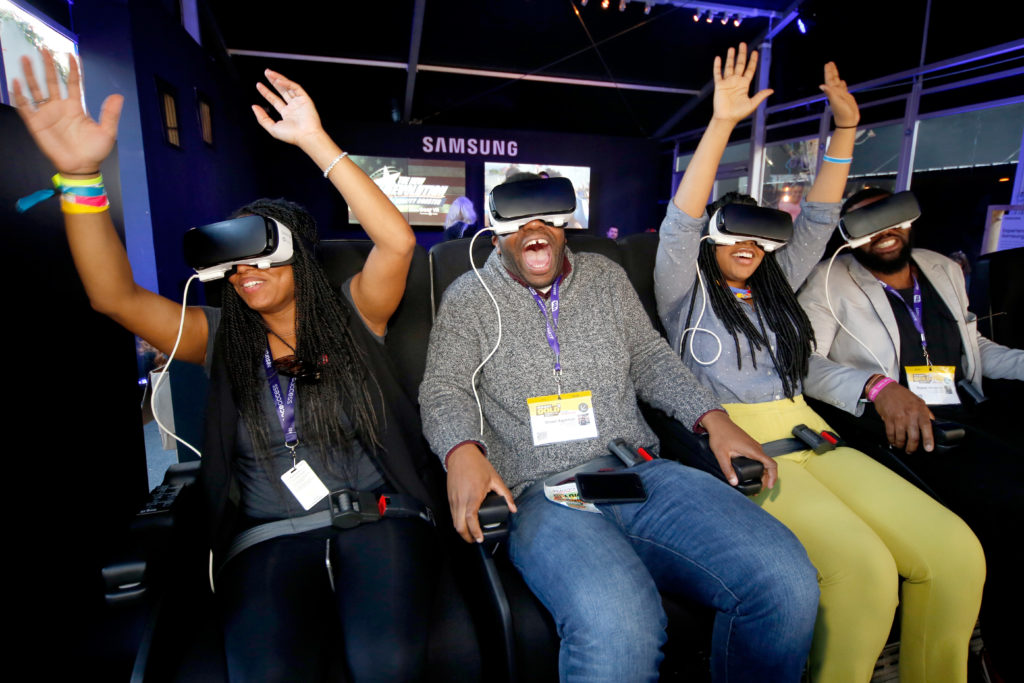The virtual reality market continues to expand with new hardware and software pushing the boundaries outward. The end of this year will see millions of more VR hardware installed, and hundreds of applications. Millions of people are now experiencing VR for themselves on a regular basis, and thus the market as a whole is beginning to get more real. The Interactive Advertising Bureau gathered a report on the subject, titled Is Virtual the New Reality?: A Market Snapshot of VR Publishing and Monetization.
Defining VR properly is still a matter for concern, with 360-degree videos somewhat confusing the issue—partly because those are a popular way to try and present VR content to someone who doesn’t have VR hardware.
“I think we need to clearly distinguish the two, because when we’re talking to advertisers or partners, we need to clarify which one offers just a point of view and means of looking around, and which one is more immersive,” said Time Inc.’s Chris Hercik. “360 VR experiences are great on-ramps to VR and for acquainting consumers with the medium, but the platforms that offer more immersion and interaction—especially in room scale—are undeniably compelling,” added Time managing editor Mia Tramz.
The report noted that VR experiences can be categorized by the level of immersion and complexity involved—which also tends to reflect the cost of creation, and the cost of the hardware necessary to deliver the experiences. That dictates the audience available, which of course is a key factor in what marketers are looking for when thinking about VR. Thus, 360 video (which can be found on YouTube and Facebook) has the largest available audience, while the full-on PC VR that is delivered by Oculus Rift and HTC Vive is a much smaller audience.
The New York Times has found great success with its VR app with more than a million users at launch and a subsequent 950,000 downloads. Users spend an average of over six minutes in the app, with 58 percent of users returning every month.
VR Goes Live
One of the strong growth areas for VR lies in the realm of live content, which right now is often centered around sports. Turner Sports, in partnership with Oculus VR, has begun livestreaming sporting events like NCAA basketball to Samsung Gear VR users.
“What better way to give people access than to than to put them in the live game itself,” says Mark Johnson of Turner Sports.
Fox Sports is also a believer in live VR content, working with NextVR to create live VR sports experiences.
VR Draws Marketers
Part of the strong attraction VR holds for marketers is the deep immersion that it brings. That tends to emphasize any message, and when properly presented, the emotional impact of VR is much greater than simply viewing something on a screen (or even interacting with things on a screen). While creating VR content is more difficult than working in traditional media, the payoff could be much greater engagement.
“Publishers we spoke with agreed that agencies and advertisers have been very interested and active in pursuing VR and 360 video opportunities, often as components of larger digital campaigns,” noted the IAB report. “The challenge for sellers is simultaneously qualifying and educating buyers on what’s actually possible—while it’s being invented.”
Still, it’s not easy developing content for VR, and that’s a big consideration for marketers who contemplate using VR in marketing efforts.
While VR still has a long way to go to approach the flood of data available with mobile advertising, several firms are already working on supplying information to marketers about VR advertising efforts. “We’re able to track a wide range of events that enable clients to do their own engagement calculations,” said CEO Mihir Shah of VR adtech firm Immersv. “At the end of the day, it’s all based on a video view. We’re seeing an 81 percent gaze-through rate on our campaigns, which means the user gazed all the way through the video. And network-wide we’re seeing a 35 percent conversion rate.”
VR/AR Standards On The Way
Standards for advertising formats are under construction by IAB, in an effort to help publishers and advertisers prepare for the various formats that are becoming new destinations for advertising.
This will include guidelines for 360 videos and photos as well as AR and VR. This will provide marketers with some help in figuring out where to start when creating assets for use in these formats. One of the important areas will be guidelines for reducing viewer discomfort, because that can be caused by improper camera movement in VR.
The Immediate Future Of VR
Surveying industry insiders about the next two years in VR, IAB found that there’s a lot of optimism. “It feels like every month we’re seeing something new, a different angle on it, a different company with a different technology,” said Johnson.
New and better VR technology at lower prices will help spread VR widely. We’ll also see more successes (and failures) among content, helping publishers and marketers refine their offerings. New ad formats will probably emerge, and we’ll see more and better data about how these formats work.
One thing that most agree on is the potential for AR, or mixed reality, and some overlap/crossover with VR.
The success of Pokémon GO is just a beginning for AR, and we’ll see plenty more in the future. Surprising successes like that will help determine future directions for VR and AR, and thus there’s going to be plenty of opportunities for creative content and creative marketing to have a huge impact.

